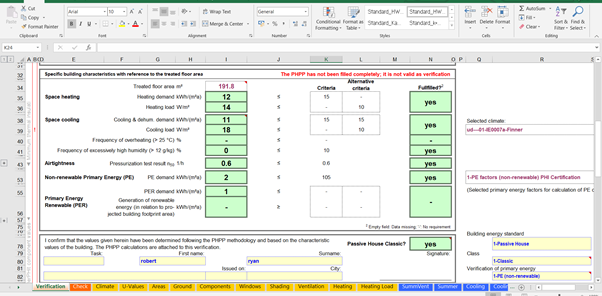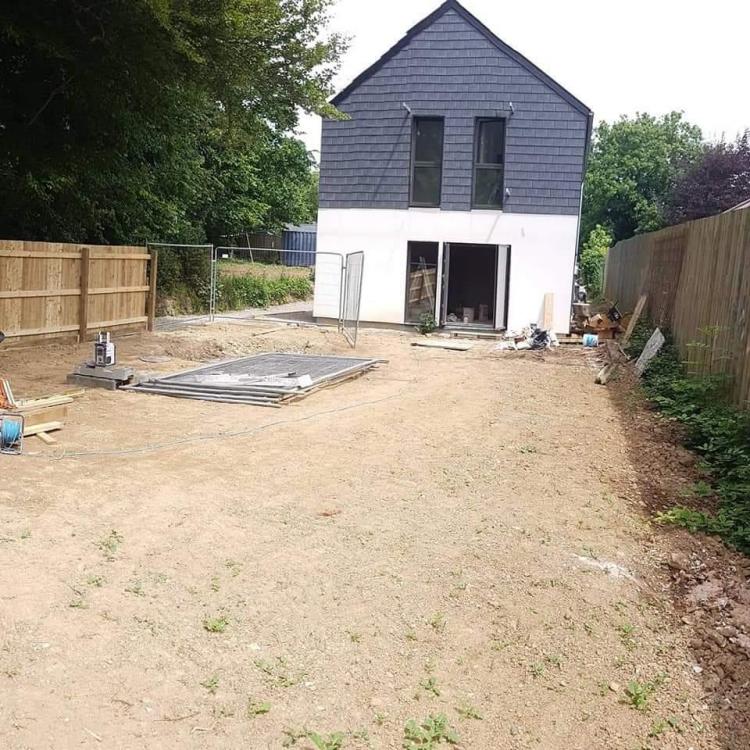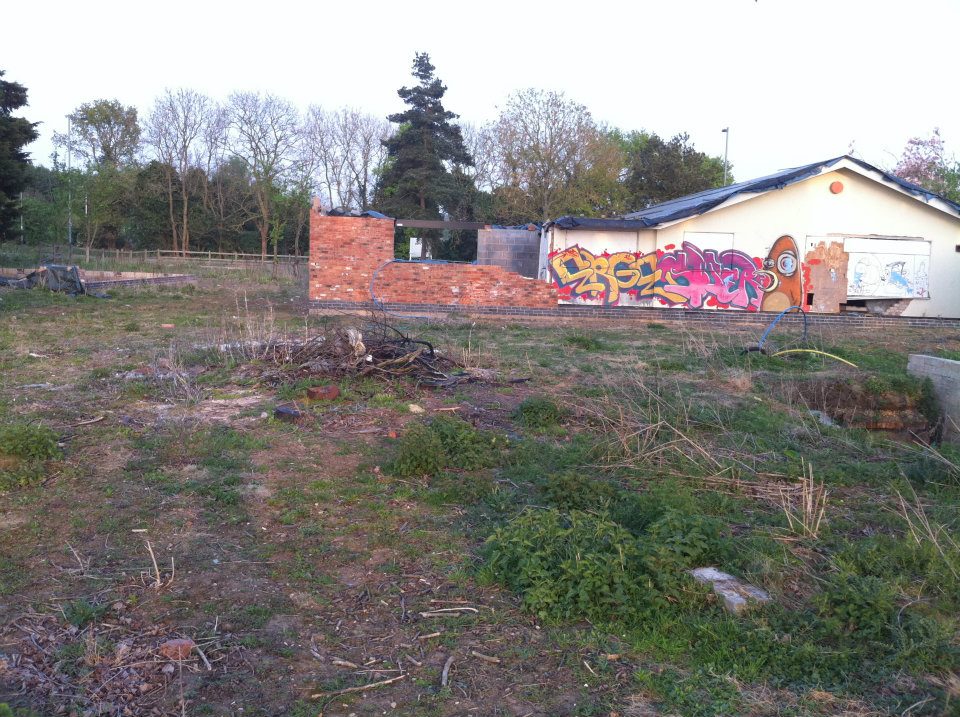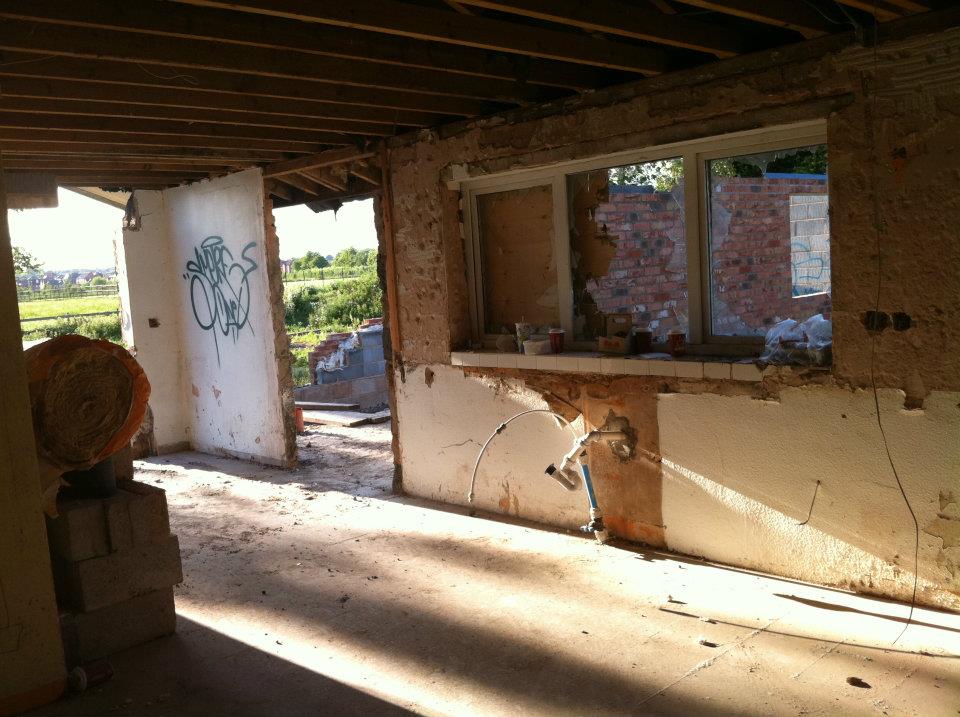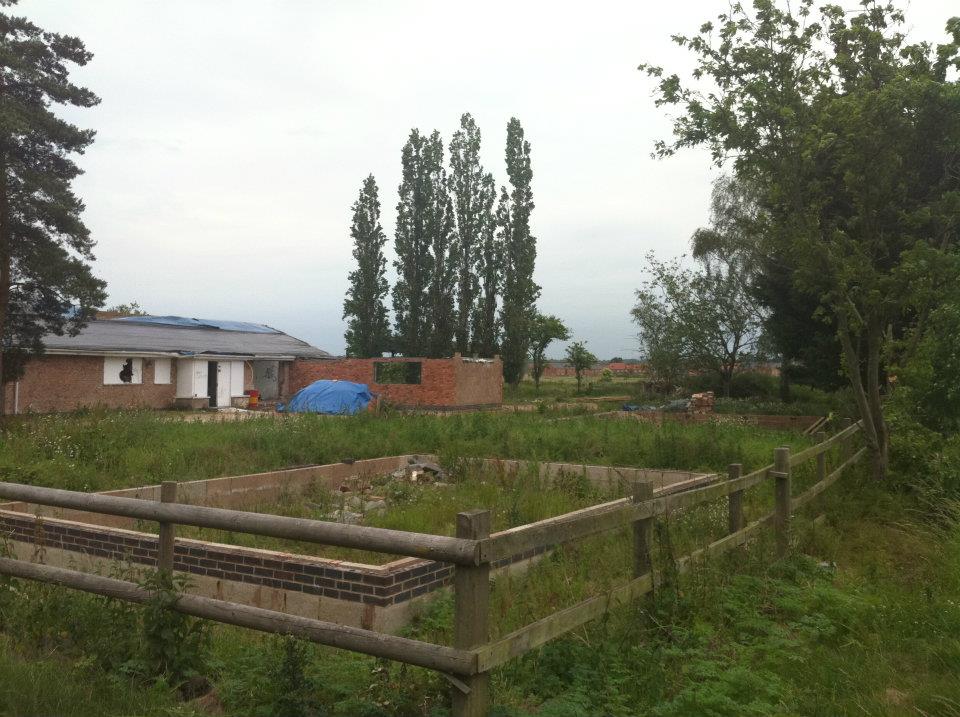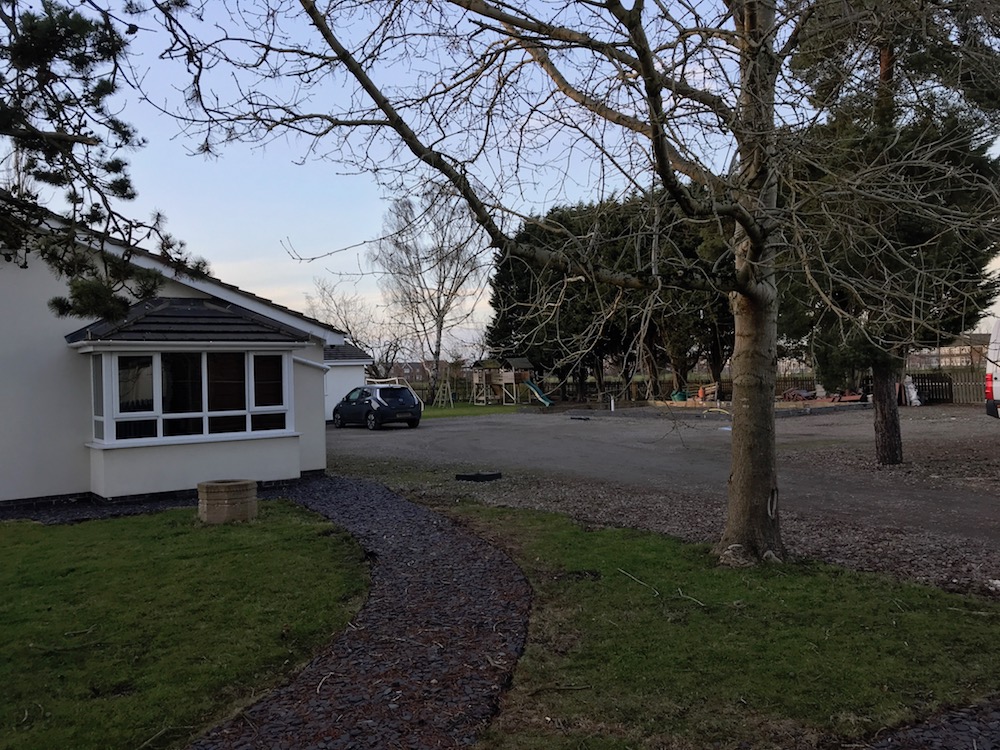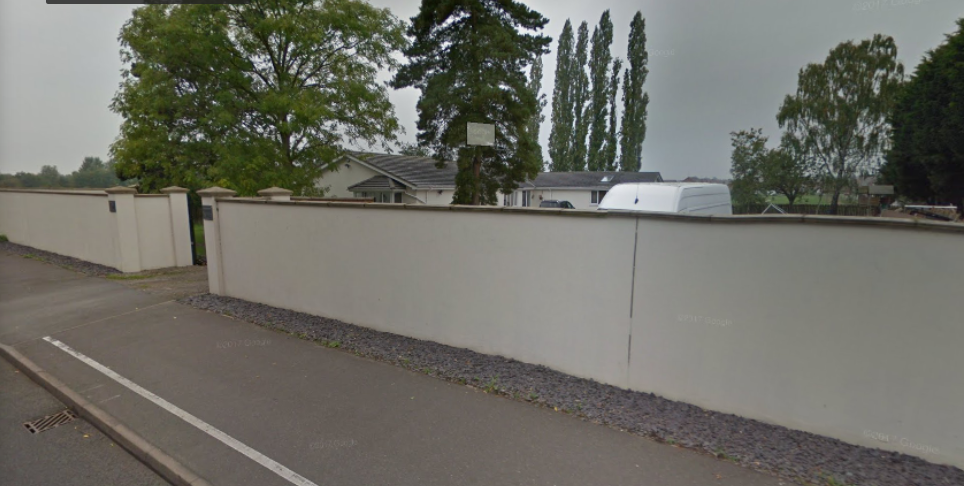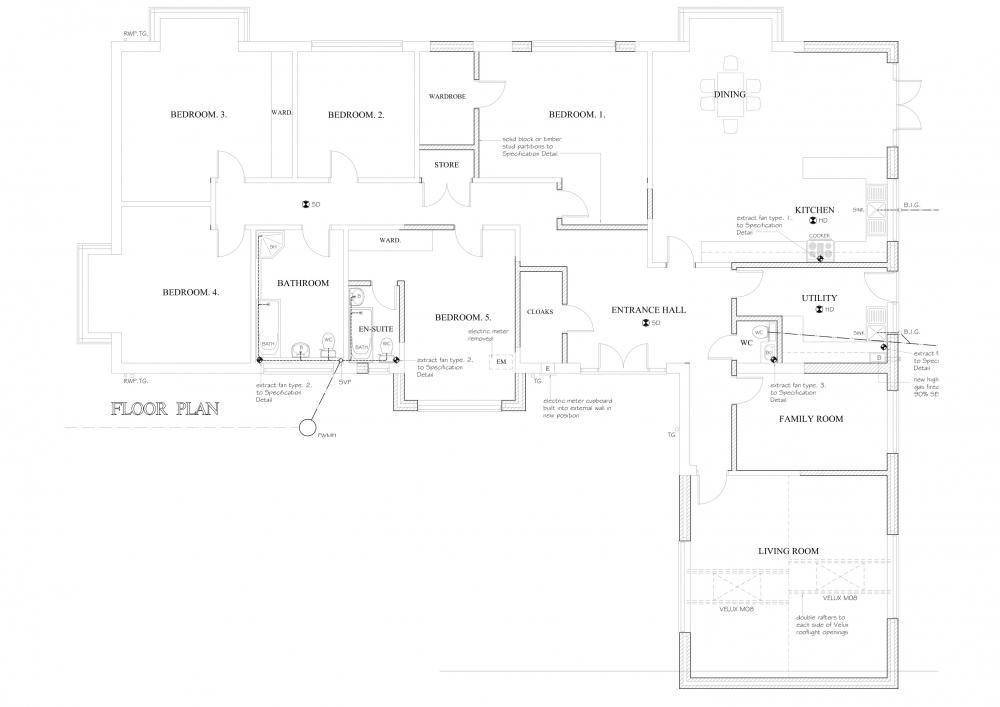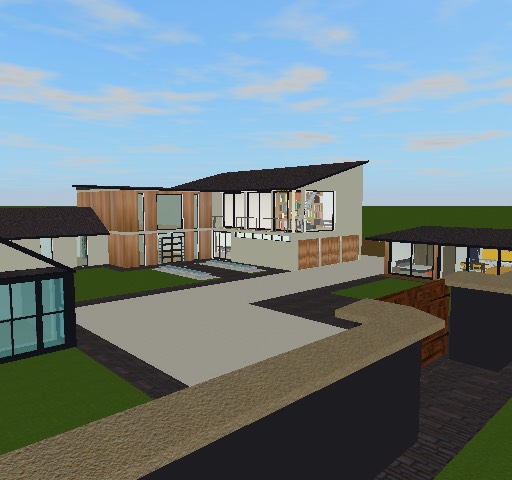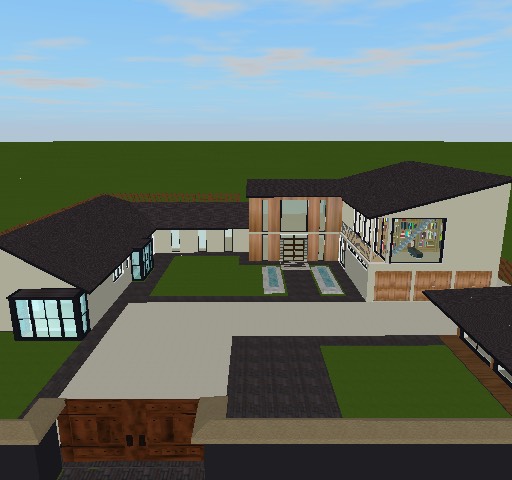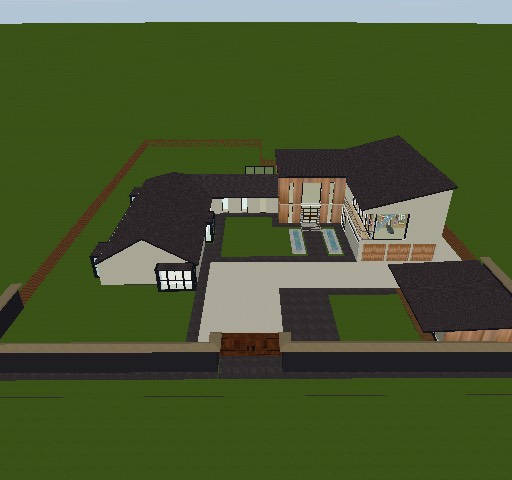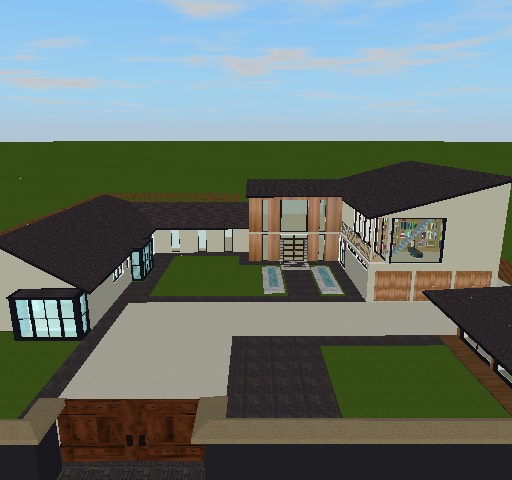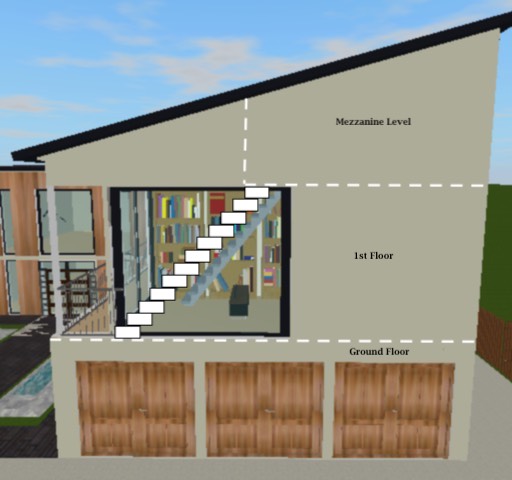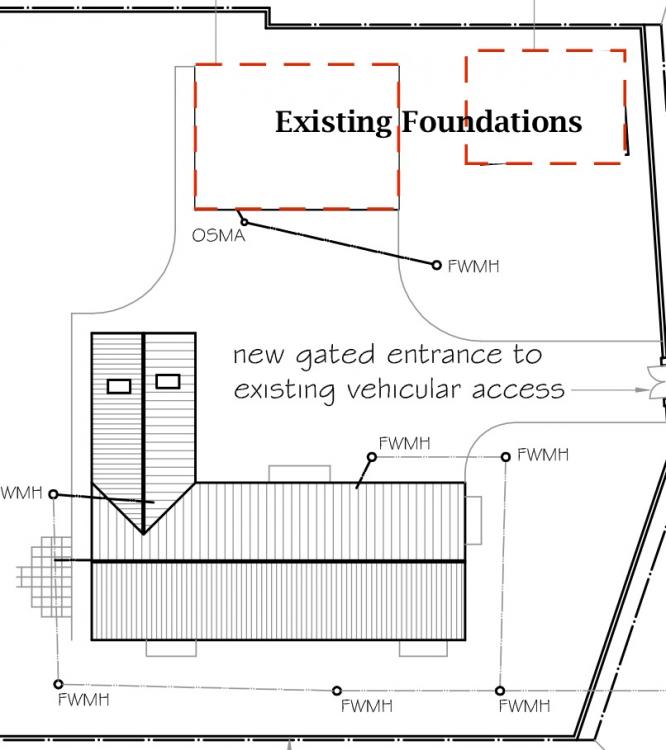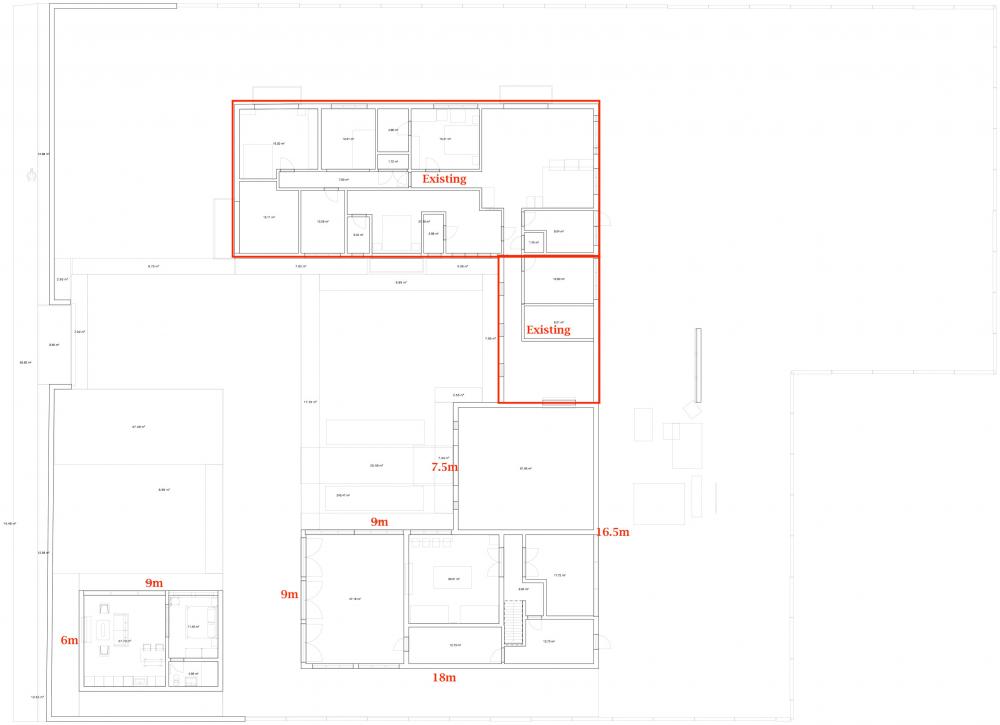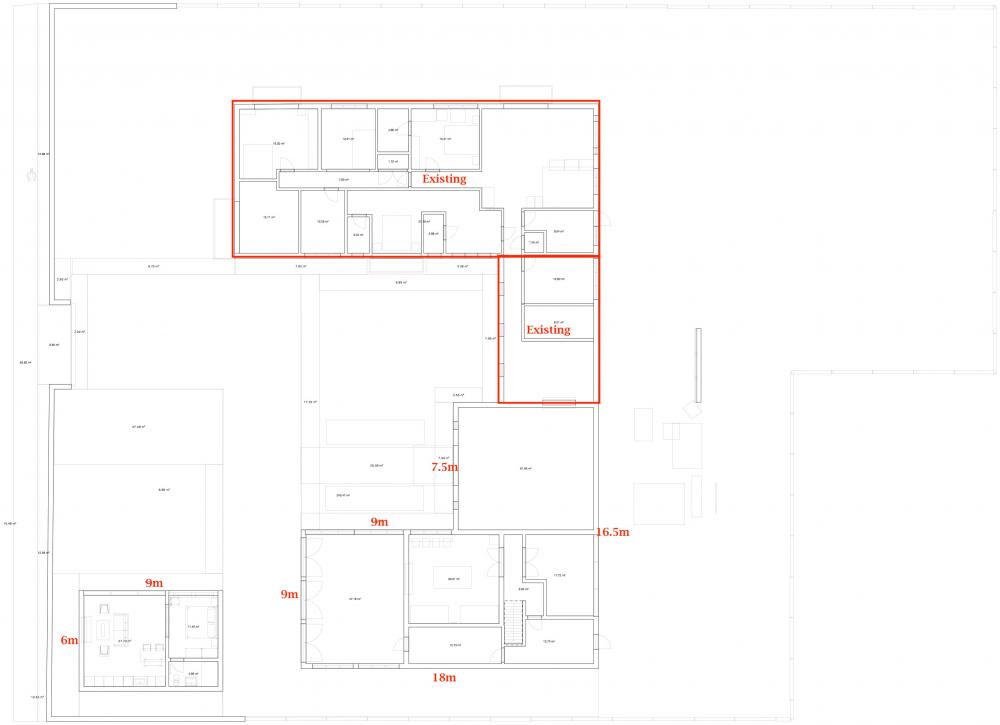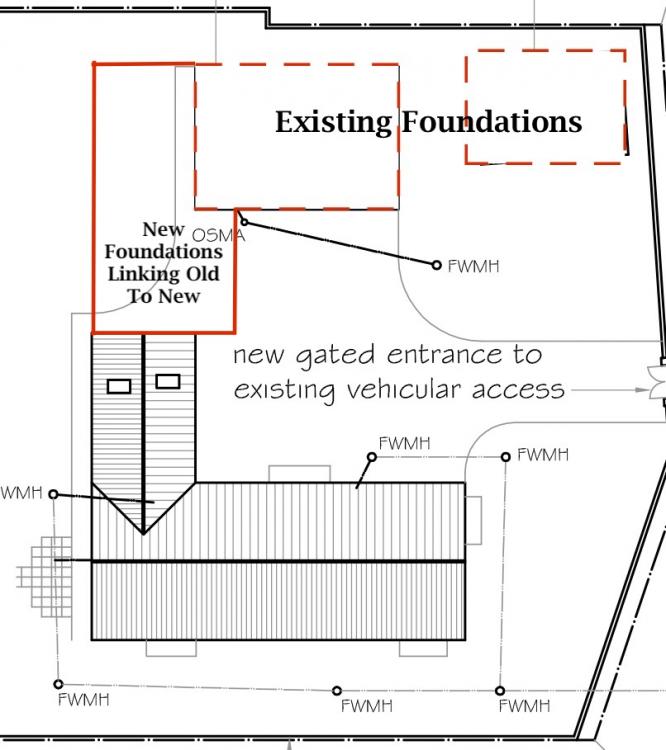Search the Community
Showing results for tags 'newbuild'.
-
Following the Govs decision to give more time to introduce net zero. I kind of had it in my head we were to be stuck with ASHP with underfloor heating, although the installation would be hideously expensive and the usage not very much more cost effective than other heating types. It seems now we may not be stuck with one option given the extension and a longer time scale to make the changes. We are quickly sliding into our pension years and im now confused as to which system (no gas available) we should employ. Is there anywhere truthful where you can compare how economic all systems are. Ive googled and thats hopeless, one says ASHP another said Electric and ive even read that oil is!!! If I ask a plumber, of course they say the systems they supply are the best. Has anyone found any honesty?
-
Good evening all, needing some suggestions for companies that could help us carry out the following works, highlighted yellow in the picture? We are based on the Isle of Mullull
- 5 replies
-
- foundations
- newbuild
-
(and 1 more)
Tagged with:
-
Good morning all, Thank you for allowing me to take part in this forum. Just to introduce myself, my name is Eric and I'm a newbuild homeowner. The reason why I am writing on this forum is to seek guidance from other more knowledgeable users in regards to landscaping. I am based in East Devon, in an area which is predominantly very clayey. The land where my development was constructed used to be farmland, and so I assume that it is quite fertile. Anyhow, I think I'll just start off describing my concerns in chronological order: At reservation stage, the developer provided us with a standard specification setting out finishes, colours, etc. One of the items in the spec was the finish to the garden areas (back garden and a strip out front along the facade). The spec stated that the ground would be finished with a 150mm thick layer of topsoil. I was quite glad that this was the case, as my concern was that the underlying clay would challenge the garden's ability to drain rainwater. Fast forward to completion, we get the keys to the house and to my surprise, the garden was topped off with site-won material, i.e. clay. In addition, the plot was plagued with stones the size of fist. To me that didn't look like topsoil... However, the next question I asked myself was: what is topsoil anyway? Doing some research, I found that there is a British Standard entitled "Specification for topsoil" (BS 3882:2015 - in case you're interested). This standard sets out the requirements for a soil to be classified as topsoil. One of these requirements is that the "maximum coarse fragment content" greater than 50mm has to be 0%. In other words, stones greater than 50mm in diameter should not be present at all, which is something that my garden clearly doesn't meet. I have gone back to the developer with this (it's been more than a month already) and they are still figuring out what to respond. I am not trying to be picky here, but I've paid a large sum of money for my new home and I will always try to make sure that I obtain a quality product that meets the minimum standards. I should add that the NHBC standards specify that gardens should be finished with a minimum of 100mm of topsoil. NB: my neighbours have placed a ver thin film of topsoil on their garden after picking out the majority of big stones. They then planted some grass seed and it's growing well. However, I think as soon as they start transiting the grass, the clay will compact and it'll become boggy with rain, which will eventually compromise the health of the grass, etc. I would be grateful if others could share their views/experiences on the matter, as I'm not sure if I'm making this a bigger issue than what it really is? Thank you very much, Eric
- 13 replies
-
- clay
- landscaping
-
(and 3 more)
Tagged with:
-
Hi all, I got reading the forum over Christmas and am finally saying "hello" after six weeks of voyeurism. I can't hide from the fact that I am a long time ICF proponent and having been installing mostly one brand over the last 6/7 years. It's all the company I work for does; ICF shells from ground to weather tight. I'm here for two reasons. The first is actually to provide a bit of support, expertise, terrible anecdotes in order to even out the playing field between self builders and the world of ICF obfuscation. Second, if I make some contacts, expand the network, raise the profile, I'd rather do that here than on LinkedIn. Hopefully this is okay with everyone. Will gladly take any advice on content should Mr Undiplomatic wades in. Cheers, Dom
-
Morning, Is anyone able to recommend an MVHR installer in Cornwall or the SW please? Many thanks, Jenny
- 2 replies
-
- newbuild
- self-build
-
(and 2 more)
Tagged with:
-
Hi, I've got plans submitted for a passive house design two storeys, two bedroom, ground floor built into the bankside on three sides, South facing. Ground floor will be just a single garage, hall, st5airs to upper and a 'music' room. As my previous building experience(over 40 years ago) didn't include plumbing and heating I've no knowledge or experience of air source heat pumps(or many of the other innovations that have come along. Basically I want to know whether air source heat pumps are noisy, do they have to be sited on a house wall and do they alter the air temperature around their inputs? Are they suitable for domestic hot water and heating? Can they be used to cool as well as to heat? Glad of any help relating to these questions. Builder to whom I've been speaking has experience of ground source heating installation but doesn't know anything about air source, and as I don't really fancy having the ground full of pipes, I'd like to find out about air source. Architect has indicated that there should be an MHVR unit but hasn't specified heating or hot water sources. Thanks Al
-
Hi all, We have just started to build a two-story timber frame in Donegal in the North west of Ireland. We are building to passivhaus standards and have an experienced passivhaus builder. I have gained loads of information from this forum and hope to get some more as the build progresses. We have a lot of south facing glazing (by design - to capture views of Donegal bay) and have added some shading to the ground floor southern windows. PHPP calculations demonstrated that overheating can be mitigated by adding some cooling from the underfloor slabs. We intend to use a Mitsubishi 8.5kW ecodan and have a Brink passive certified MHRV specified. Phpp and plans attached. Two storey-Floor Plans, Sections, Elevations 280620.pdf
- 11 replies
-
- 1
-

-
- passivhaus
- timberframe
-
(and 2 more)
Tagged with:
-
Hi Everyone, We're doing a self build in near Ascot, Berks. It took us a while to get planning but we finally got it and we're hoping to start on our new house towards the end of the year. We're hoping this forum will provide some great advice and support and will help us avoid any nasty pitfalls. Our tender pack has gone out to a few builders, but we also want to put it out to a few trades to see if it's worth moving away from a main contractor, taking on more of the build responsibility to save on cost. If anyone has any advice or recommendations on tradespeople who cover E.Berks/S.Bucks/NW. Surrey we'd love to hear from you. Thanks
-
So pleased to find this forum. We built our first house in Ireland just 10 years ago, moved back to UK two years ago with the intention of building here. Delighted to get planning permission two weeks ago - which took 6 months and lots of paperwork (and fees!) and now the real work starts. Plan to spend at least 6 months in preparation, now at the detailed drawing stage. No idea yet whether we employ a main contractor, project manager or mix of the two. Our last build was timber frame and wouldn't go that route again, on other hand the MHRV was the best thing we did so that is top of the list along with UFH, heat pump and solar PV. Looking forward to joining the self build community!
-
Hi guys, Just joined this group. Just finished building a Passivhaus in Penzance, Cornwall. My friend and I built 2 houses together, one for each family on a challenging plot chasing the passivhaus dream... We've been in the house since end July and just seeing how it copes with our first winter! So it's a timber. Frame design, sitting on a concrete raft (on 30cm insulation!) planned using the PHPP software to conform to PH standards. So it's super insulated, airtight (0.3ac/hr) no cold bridges, triple and quadruple (skylights) glazed with Brink MVHR system (ubbink plastic duct and plenum). My friend developed the wall buildup himself to achieve the PH standards without us having to buy premade PH timber frame sections, saved us a lot of money... Biggest struggle so far, trying to get the. Brink post heater to operate... It's wired up correctly but won't operate, even at high fan speeds...? Which is really why I joined this forum, to hopefully glean some info as our supplier hasn't solved it (or Brink at this stage!) Cheers.. Murray
- 4 replies
-
- 2
-

-
- passivhaus
- mvhr
- (and 4 more)
-
Hi all! First time posting, but I've been devouring the contents of the site for a few months whilst getting funding sorted for the next phase in my building. (A great source of information and debate!) Warning, it's a long post! A bit of background.. I bought a plot with an existing bungalow in 2011, the previous builder had run out of cash mid-build so that the site was in a real state to the untrained eye. At this stage, I pretty much struggled to change a lightbulb, so it was a fairly huge undertaking to build the 5 bed home that I had in mind. One of the first things I did whilst we were waiting for completion was to grab a shovel and start digging up some of the garden. About 3 hours later, back aching and hands raw, I'd only scratched the surface of what is almost 0.8 of an acre! That was when my builder came past and recommended I hire a rotavator, that was the first of about a million lessons I learnt on the build! Present So I've managed to build a nice 5-bed bungalow that we've been happily residing in for the last few years and still have foundations in place from the first builder for a fairly huge garage block (11m x 9m) and also another detached annexe (9m x 6m). The intention was to finish the outbuildings/ do the driveway when funds allowed, however, one thing has lead to another and the plans have grown so that the detached garage attaches to the main building, creating a more useable space with another floor above it with additional bedrooms. The reason for this is that my family has increased since we moved in (my brother is now married, my parents live with us, and I've had 3 children!) so we'd like to create zones for each family. The Plan I've been messing around with plans whilst sorting out funding and have come up with something that I think looks good and has all the space we'd need. The main limiting factor in our case is funds, the plot is more than large enough and our area has a fairly high ceiling for house prices. With this in mind, any advice on keeping the building costs as low as possible will be much appreciated. Another reason for sharing my plans with you guys is that with your vast knowledge of whats to come, I'm hoping you might pick up on some aspects which I may have overlooked. I'm not an expert by any means, though I've gained enough skills since the initial build with further projects that I feel comfortable managing the build myself and getting my hands dirty where I can to save money. Things I'm considering/ decided and would welcome your experiences on... Heating and Hot Water This is a pretty big consideration to be honest, my current thoughts are to install a ground source heat pump with boreholes, this will provide the UFH throughout the new build. The current part of the house I'd like to keep intact as much as possible so I've not intention of ripping the floors up and installing UFH, so the existing rads will have to do, but ideally I'd get rid of the combi boiler which is struggling to meet our demands at the moment and isn't in great nick. I'm not sure whether a system exists that will give us a whole home solution, with hot enough water and low running costs. As I have gas, I'd be reluctant to install an electric hot water tank, I'd imagine a gas fired would be significantly cheaper to run, though I've never seen this paired with a Ground Source Heat Pump. Tesla Solar Roof Ever since I saw this, I've wanted it! With the limited information there is out there, the cost of installing this is going to be somewhat similar to a slate roof but with the added benefit of providing enough solar energy for our needs, including electric cars (we already have 2 Nissan Leafs!) Obviously, the main drawback is that I'm going to have to wait for it, I've already put a deposit down which doesn't mean anything for timescales but I'm willing to wait a while longer as I think this will both add value to my home, provide the energy we need and also look outstanding too. However, that's not to say that I'll wait forever, and with my budgetary restrictions, this is definitely a luxury so I'd appreciate some alternatives or suggestion you guys may have. ICF I intend to build the extension in ICF, I'm currently favouring Nudura simply because my architect has recently completed a project using this system and there's a fairly local supplier. The reason I'm favouring ICF is that I think I could handle putting the shell together (with a little help) and I believe this will not only save costs, but time too as well as taking away a trade we normally sub out. Additionally, the added benefit of a tighter shell with better u values than block and render is a welcome bonus, especially with the amount of glazing I'd like. Cladding For some reason, I'd always assumed the cheapest way to clad a building was to render it, so I've not really explored many other options. Based on some calculations, it seems that many cladding options such as wood are going to cost a similar amount so it's something I'd like to know more about, how have you guys decided what to use and why (design/ budget/ maintenance etc.?) Structural Spans At the moment my architect (he's not a full architect) hasn't began work on putting my design together, but before he does, I'd like to know if there are any major structural issues that make my design unfeasible. I will obviously use a structural engineer too, but before it gets to that stage, I'd like to know the impact of my design and whether I should try to create an internal structural wall that can reduce the span (9m). Are there any other options? Costs I'm going to be adding somewhere along the lines of 600m2 including the annexe, ground floor, first floor and mezzanine levels. Going through some of the build cost calculators gives me some rather worrying figures but they don't necessarily account for the fact that most ground works are in place, including services which i took the liberty of adding water/ gas and network cabling to the other buildings already. Since our existing home serves our purposes for now, there is no rush to get everything done from the get go, so I envisage completing areas and rooms as and when time and funds allow, so my main budget needs to get the shell built including the roof and windows, electrics and plumbing (both 1st fix only). Ideally I'd like it to be clad and looking finished from the outside baring any landscaping and driveway which will be the icing on the cake eventually. I think I'm going to have a pot of around £200k-£300k to get to that stage, so I'd be interested to know if you think I'm crazy or not! With all of this in mind, I'd love for some cost saving measures you think would be relevant to the build, I know the basics such as shopping around, thinking outside of the box with suppliers (direct from factory etc) Thanks for taking the time to read, I'm looking forward to hearing what you guys make of my project!
- 18 replies
-
- 2
-

-
- renovation
- newbuild
-
(and 2 more)
Tagged with:
-
Hi all, Just starting planning our second (last) build of a place for our retirement. Have been reading the excellent Harris blog and am intrigued by a) the lack of a 'traditional ' heat store and the use of a buffer and Sunamp. Has anyone else tried this ? and how helpful with the design might Sunamp be? We have good electrical but would appreciate recommendations for plumbing/ME, both design and install. The house will be a rooms in roof bungalow approx 290 M2 of which 180 will be on the GF. Underfloor only of the GF tiny electric radiators upstair. Passiv from MBC looks likely , yet to choose windows so any views appreciated. MVHR and solar PV will be fitted. Thanks Sloco



